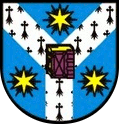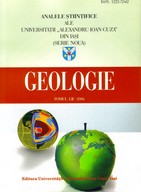
English title
- SERIA
GEOLOGIE (AUI-G) - |

|
| Log in New account |
| Home | Main Page | Guide for Authors | Peer Review | New Articles | Events | Archive | Index | Contact us |

|
Article The Raman study of the white pigment used in Cucuteni pottery
Nicolae Buzgar - “Al. I. Cuza” University of Iaşi, Faculty of Geography and Geology, Department of Geology, 20A Carol I Blv., 700505 Iaşi, Romania, Department of Geology George Bodi - Romanian Academy – Iaşi Branch, Institute of Archaeology, 18 Lascăr Catargi Str., 700107 Iaşi, Romania Andrei Buzatu - “Al. I. Cuza” University of Iaşi, Faculty of Geography and Geology, Department of Geology, 20A Carol I Blv., 700505 Iaşi, Romania, Department of Geology Andrei Ionuț Apopei - “Al. I. Cuza” University of Iaşi, Faculty of Geography and Geology, Department of Geology, 20A Carol I Blv., 700505 Iaşi, Romania, Department of Geology View abstract as pdf file | View full article as pdf file Abstract: Shards from Cucuteni archaeological sites of Moldavia (eastern part of Romania) were analyzed
through Raman spectroscopy in order to identify the white pigment used in the decoration of
Cucuteni pottery (cca. 4500–3500 B.C.). Ti-minerals, namely anatase, rutile and titanite, were
identified in the white pigment of nearly all the samples. Zircon, quartz and K-feldspars were
also observed in a number of samples. Kaolinite was not discovered because the Raman bands of
this mineral are masked by the Raman response of the previously listed minerals. The white
pigment used in the painting of Cucuteni pottery is Ti-rich kaolinitic clay which forms residual
clay accumulations developed on the Tertiary volcanic rocks from the Eastern Carpathians.
These residual clays may also contain zircon, quartz and feldspars. Keywords: Raman spectroscopy, Cucuteni pottery, white pigment |
copyright © 2024 Department of Geology |